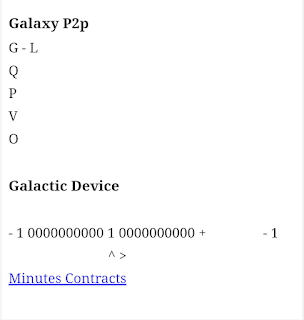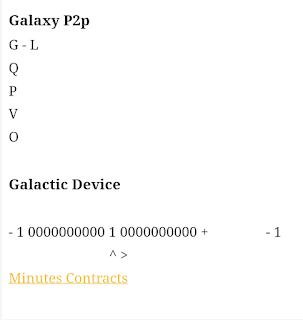Volts Amps Watts
Here's a detailed list of how volts, amps, and watts are related, and how they interact in electrical circuits:
1. Volts (V)
Definition: Voltage (measured in volts, V) is the potential difference or electrical pressure that pushes electric charges through a conductor.
Unit of Measurement: Volt (V)
Formula: (when W = Watts and A = Amps in direct current)
2. Amps (A)
Definition: Current (measured in amperes or amps, A) is the flow of electric charge through a conductor or circuit.
Unit of Measurement: Ampere (A)
Formula: (when W = Watts and V = Volts)
3. Watts (W)
Definition: Power (measured in watts, W) is the rate at which energy is consumed or produced in an electrical circuit.
Unit of Measurement: Watt (W)
Formula:
This formula applies for both AC and DC circuits, although additional considerations apply to AC due to phase differences (power factor).
Relation Between Volts, Amps, and Watts
Basic Power Equation:
Watt = Volt × Ampere
This means the power in watts is the product of the voltage (V) and the current (A).
Practical Examples
1. For a DC Circuit:
If a device operates at 120V and draws 2A of current:
Power (W) = 120V × 2A = 240W
2. For an AC Circuit:
In an AC circuit, the power is also calculated using the formula , but we must account for the power factor (pf):
Apparent Power (VA) = Voltage (V) × Current (A)
Real Power (W) = Apparent Power (VA) × Power Factor (pf)
Example: If a motor uses 240V and draws 10A, and the power factor is 0.8:
Apparent Power = 240V × 10A = 2400 VA
Real Power = 2400 VA × 0.8 = 1920W
Important Notes:
Power Factor (pf): In AC systems, not all current contributes to the work done, so the power factor adjusts the relationship between apparent power (VA) and real power (W).
AC vs. DC: In AC systems, voltage and current vary with time, while in DC systems, voltage and current are constant.
By understanding these basic concepts and formulas, you can calculate the power requirements and performance for electrical devices and systems effectively.
Funding
$0.00

Galactic Legal
Recent Posts
Recent Posts
Loading recent posts...
Signup
System
Disconnected
Power
Off
Selective
Off
Privacy
Off
Gates
Popular Posts

Quantum Black Holes
Sunday, April 20, 2025

Entangled Black Holes
Sunday, April 20, 2025

Total Time
Thursday, April 17, 2025
- Live Channel
- Land
- Loans
- Debit
- Wallpaper
- Live Chart
- Invest Contract
- Dragon Tail Strategy
- Dragon Trading Strategy
- Holdings
- Finance
- Active Holdings
- About
- Funding
- 8137384283
- (813)-738-4283
- Signup
- Profit Calculator
- Stock Calculator
- Buy Bitcoin
- Code Breaker
- Light Hours
- RGB
- Capsule Corp
- RGB Cards
- RGB Time Cards
- Galactic Time Device
- Buy Gold
- Instant Gold
- Invest Gold
- Gold Api
- Gold Ledger
- Gold Interest
- Heatmap
- News
- Galactic Constant
- G · C° Ai
- [ Gf< > Af + ~ - 3100 · < > + ~ -18bNe]
- [G·C° ~ C2c > 8bNe ^100 <(ThzR)> c2C~ C·G°]
- Gf · Af × = E°
- Af + ~ + 3100 145 1961 1945 1942 1932 ~ < - 18bNe]
- Quantadecimal
- Privacy Ai
- Interactive Viewer
- Solar Entangled Reactor Device
- Solar Entangled Module
- [Gf < 3100 1981 > -18bNe] Notes
- Wireless Power
- Magnet Speaker
- Quantum Speaker
- Active Coms Earth
- Galactic Active Coms
- Quantum Position
- Quantum Prison
- Galactic Satellite
- Gz1 Ai
- Gz1
- PzR1
- PzC1
- PzCR1
- PzR2
- Quantum Entangled Power Device
- Power Suit
- 24
- 32
- 45
- 100000
- 24,901
- 24901 E
- Intelligent Factor
- Communicator
- Galactic Satellite Ai
- Galactic Military
- Future Past Present
- Z Force
- Mobile Suit
- Photonic Scanner
- Quantum Well
- VS
- Qubit
- Interactive Coordinates
- Quantum Locking
- Quantum Levitation
- Space Time
- Total Distance
- Quantum Dimension
- Galactic Viewer
- Galactic Viewer Sat
- Galactic Viewer Earth
- Galactic Viewer Quantum Well
- Galactic Viewer Particles
- Galactic Viewer Nuclear
- Galactic Particle Accelerator
- Galactic Quantum Particle Accelerator
- Galactic Viewer Solar System
- Particle Accelerator
- Galactic Solar System
- Galactic Viewer Levitation
- Galactic Quantum Levitation
- Galactic Space Time
- Quantum Prison z
- Galactic Viewer Universe
- Cards
- Dashboard
- Atmospheric Generator
- Galactic Spacecraft
- Particle Accelerator Td
- Electrons Proton Neutron
- Quantum Graviton Photonic Model
- Neutron
- Neutron b
- Fission
- Fusion
- Neutron B
- GcQ = E
- Particle Engine
- Particle Engine Rm
- Particle Engine RmS
- Particle Printer
- Particle Molecule Deposition
- UaO
- Orbital Rotation
- Galactic Dynamic
- 10^
- Volts Amps Watts
- Jobs
- 57
- 63
- Population
- Candles
- Moving Averages
- Molecular Deposition
- Atmosphere Spacecraft
- Atmosphere Collector Spacecraft
- Atmosphere Spacecraft V2
- Atmosphere Spacecraft V3





0 Comments